When humans turned wolves into domesticated dogs, with some unlucky breeds (usually the ones with short noses and protruding eyes) came crooked and abnormally narrow tear ducts. As a result, these dogs are prone to producing excessive tears. But although genetically-speaking these tear duct deformations cannot be fixed, the effects of too many tears can be managed. In this article, we will discuss dealing with tear stains (and beard stains), and provide safe recommendations on tear stain remover products and home remedies.
Table of Contents
- Causes of Excessive Tearing
- What Causes Tear Stains?
- Using Antibiotics As A Last Resort for Tear Stains
- How to Treat and Prevent Tear Stains
- Home Remedies and Commercial Tear Stain Remover Products
Causes of Excessive Tearing
While a small amount of daily eye gunk is normal, excessive tearing is not. Excessive tearing is exhibited by perpetual wetness under the dog’s eye area, and is commonly accompanied by red or brown discoloration of the hair, also called tear stains.

Some medical causes for excessive tearing, include:
- Ingrown eye lashes
- Large tear glands
- Small tear ducts
- Stress
- Drugs
- Poor-quality diet
- Second-hand smoke
- Ear infections
- Allergies
Young puppies who are teething may produce more tears. Tear production and staining should lessen when the dog reaches maturity.
What Causes Tear Stains?
Red tear stains are usually caused by dye molecules called porphyrins, which are iron-containing molecules produced when the body breaks down red blood cells. In dogs, a significant amount of porphyrin is excreted through tears, saliva, and urine. (Source)

As such, when saliva or tears rich in porphyrin sit on light-colored dog hair for any amount of time, red colored stains can result.
Porphyrins are usually to blame, not only for red tear stains, but for beard stains in particularly drool-y dogs, and paw stains in dogs who lick theirs excessively. Sunlight also darkens porphyrin, causing the stains to become even more noticeable and unsightly.
Red vs. Brown Tear Stains (Yeast Infections)
As mentioned above, red tear stains are usually caused by porphyrins. However, if the hair under your Doodles eyes is perpetually wet due to excessive tear production, he could develop a yeast infection in that area. Yeast infections are exhibited by discoloration that looks more brown than red, and may have an unpleasant odor.
If your Doodle does develop a brown-colored yeast infection, it’s probably because his face isn’t being cleaned or trimmed properly. Luckily, this is usually a medical condition that’s quite easily treated with proper grooming and upkeep.
Because brown staining from yeast infections and red staining from porphyrins are two different problems, supplements aimed at decreasing porphyrin-caused tear stains will not work in all dogs.
Let’s talk about this next.
Bacterial Infections
In regards to porphyrin-decreasing supplements not working in all dogs, this indicates that yeast infection is not the only possible cause of tear stains. In fact, it’s been found that giving some dogs certain antibiotics can eliminate excessive porphyrin production, indicating that chronic low grade bacterial infections can also be a cause of tear stains.
Tylosin, the antibiotic in the popular (and controversial) commercial product Angels’ Eyes*, is often effective in bacterial cases. Other forms of antibiotics that have been used to treat tear stains with success include doxycycline, metronidazole, and enrofloxacin.
*The old formula of Angels’ Eyes contained tylosin. Their new formula does not. Be sure to check the ingredients list of any product claiming to remove tear stains.
Antibiotics are not effective against yeast. Also, although antibiotics are usually harmless in small doses, individual dogs may react differently.
Using Antibiotics As A Last Resort for Tear Stains
We should keep in mind bacterial resistance associated with antibiotic overuse, and use them only as a last resort.
“Tear stains are not significant enough to risk giving antibiotics to your pet.”
Jessica Meekins, Veterinary Health Center at Kansas State University’s College of Veterinary Medicine
Statements were issued by the school after the FDA’s warnings against products like Angels’ Eyes and Angels’ Glow were released years ago.
It should also be mentioned that many other countries, including the UK and all of the EU, have outlawed tylosin and tylosin-containing products. (Source)
All of this is to say: only use antibiotics under the guidance of your vet, and ONLY if the tear stains/excessive tear production continues, despite your best efforts to groom and keep your dog’s face meticulously free of porphyrin.
How to Treat and Prevent Tear Stains
As mentioned, the goal is to keep the area meticulously free of porphyrin. Most tear stains can be prevented simply by keeping the face properly cleaned and trimmed.
We will be going over safe commercial tear stain remover products in a bit, but first here are some tips for addressing some underlying causes of tear stains:
- Keep the hair under the eyes neatly trimmed. Check out our handy video tutorial if you don’t know how to do that.
- Wipe the area at least once daily (or at least twice daily in Doodles with excessive tear production) with eye grooming wipes or a slightly damp wash cloth, which will dilute and wash away the porphyrin.
- Keep regular appointments with your groomer.
- Don’t use plastic dog food bowls. Instead, use stainless steel, porcelain, ceramic, or glass. This is because over time, plastic can develop tiny cracks that harbor bacteria which cause tear stains.
- Give your dog bottled or filtered water, especially if you live in an area with hard tap water (which is high in mineral and iron content).
- Feed your dog the highest quality diet you can afford. A better diet can sometimes help reduce porphyrin production. Some people swear by homemade or raw diets, which you can read more about here, though most vets will recommend feeding a well-studied commercial brand of dog food.
Home Remedies and Commercial Tear Stain Remover Products
Here are some non-tylosin tear stain remover products and home remedies that may help to reduce the discoloration.
- Liquid Vitamin C – Clean under the eyes with a cotton ball dipped in liquid vitamin C. The acid oxidizes the iron in the porphyrins and will help to lighten the discoloration that’s already there.
- Contact Lens Solution – Similar to the vitamin C, contact lens solution that contains boric acid will oxidize the iron in the porphyrins and will help to lighten the discoloration.
- Organic Chamomile Tea – Clean under the eyes with a cotton ball dipped in the tea.
- Colloidal Silver – Completely safe to use around the eyes, colloidal silver has antimicrobial properties that can help clear up yeast infections as well as treat allergies, inflammation, and infections. Clean under the eyes with a cotton ball sprayed or dipped with colloidal silver.
- NaturVet Tear Stain Plus Lutien Supplement – These chews help eliminate unsightly tear stains from the inside out by supporting your pup’s immune system and lubricating their mucous membranes.
- TropiClean Spa Tear Stain Cleanser – Made with natural ingredients like oatmeal and blueberries, this tear-free face wash gently foams to remove tear and beard stains without irritating the eyes.
- Miracle Care Sterile Eye Wash Pads – These convenient pre-soaked pads clean dirt, grime, and bacteria that can cause infection in and around the eyes without any of the harmful bleaching agents.
- Tear Stain Remover Comb – These fine-tooth combs gently remove tear stain buildup without the use of solutions. This comb is effective and safe to use regularly to prevent mucus and crust from forming and building up around your pet’s eyes.
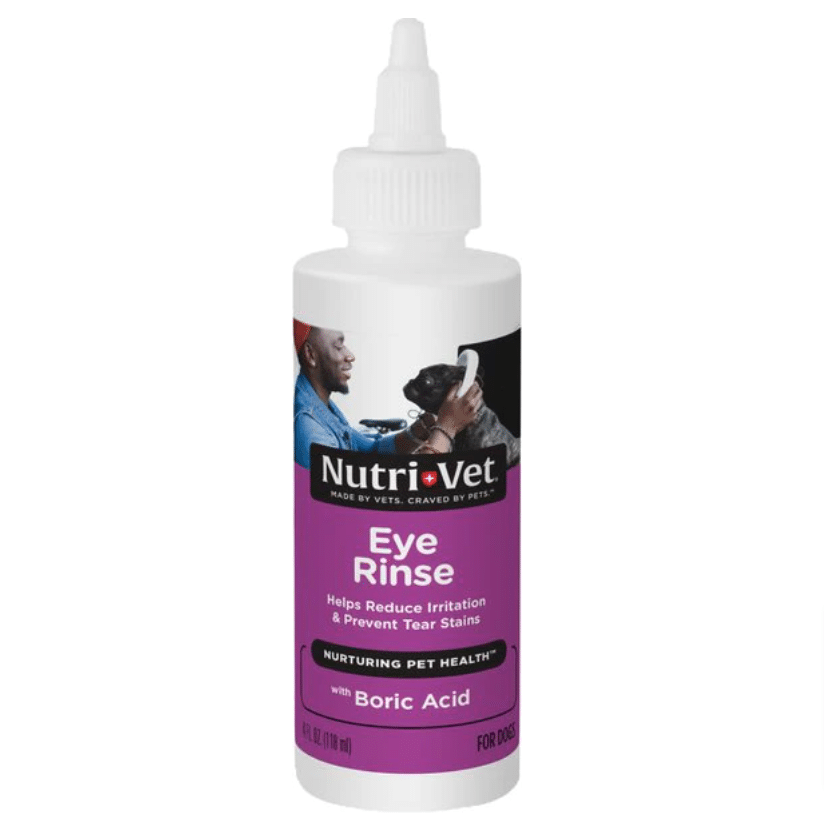
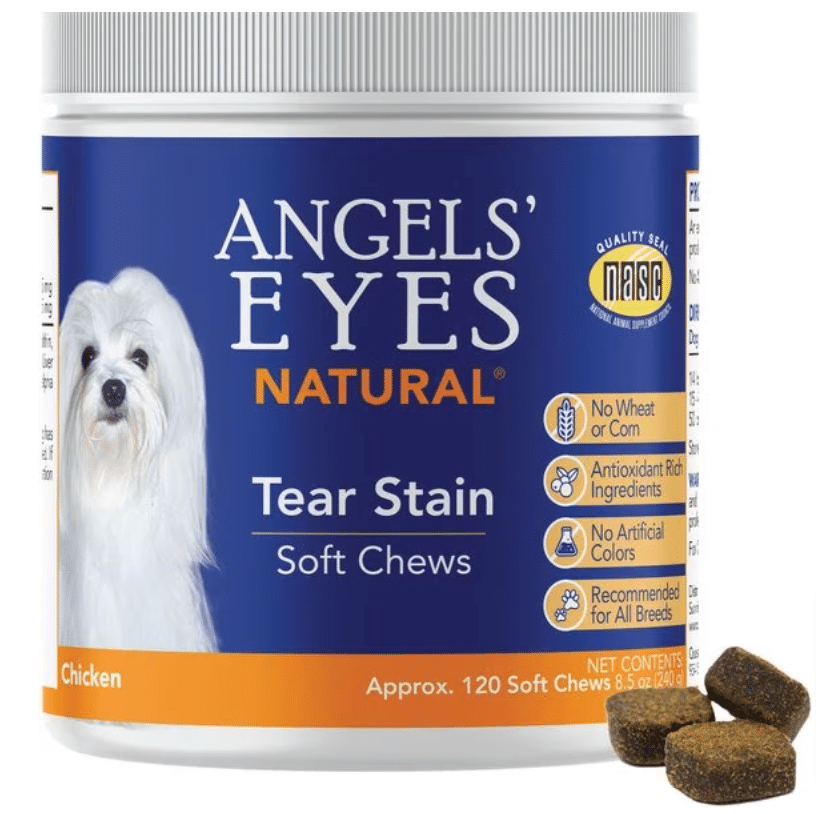
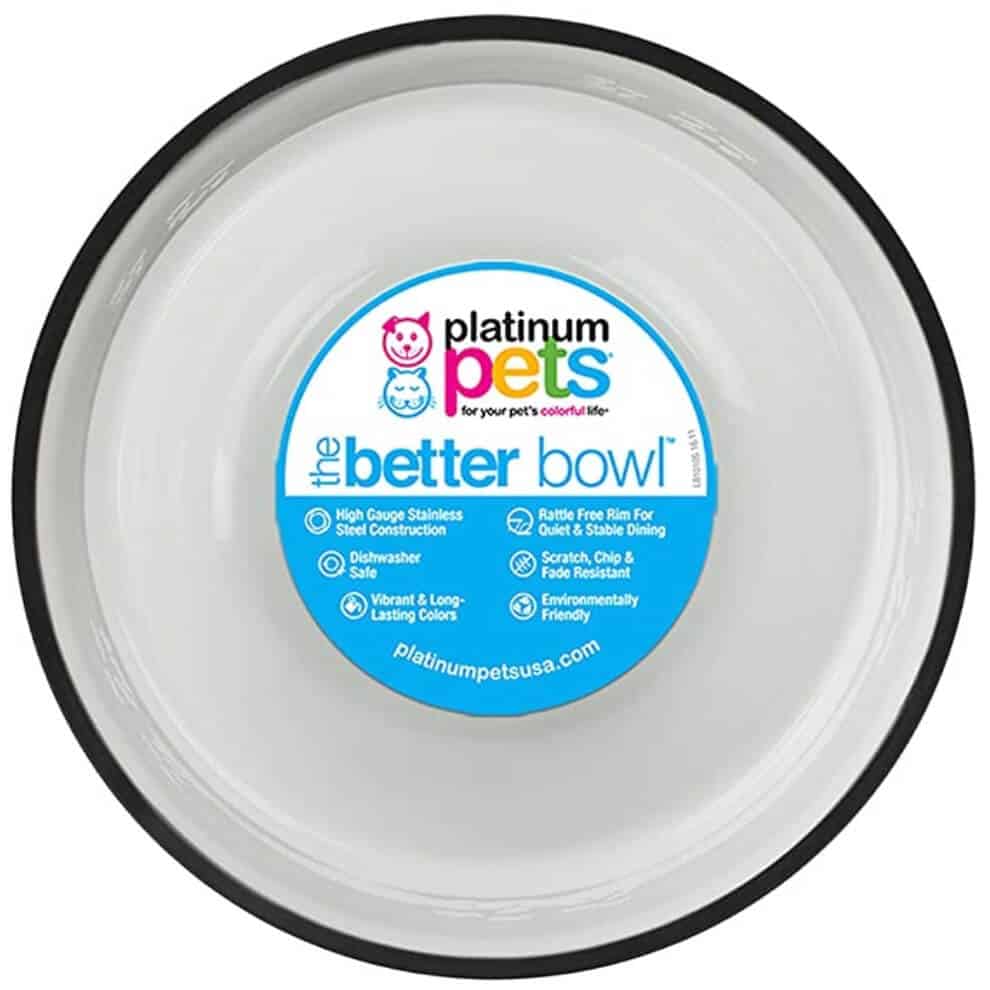
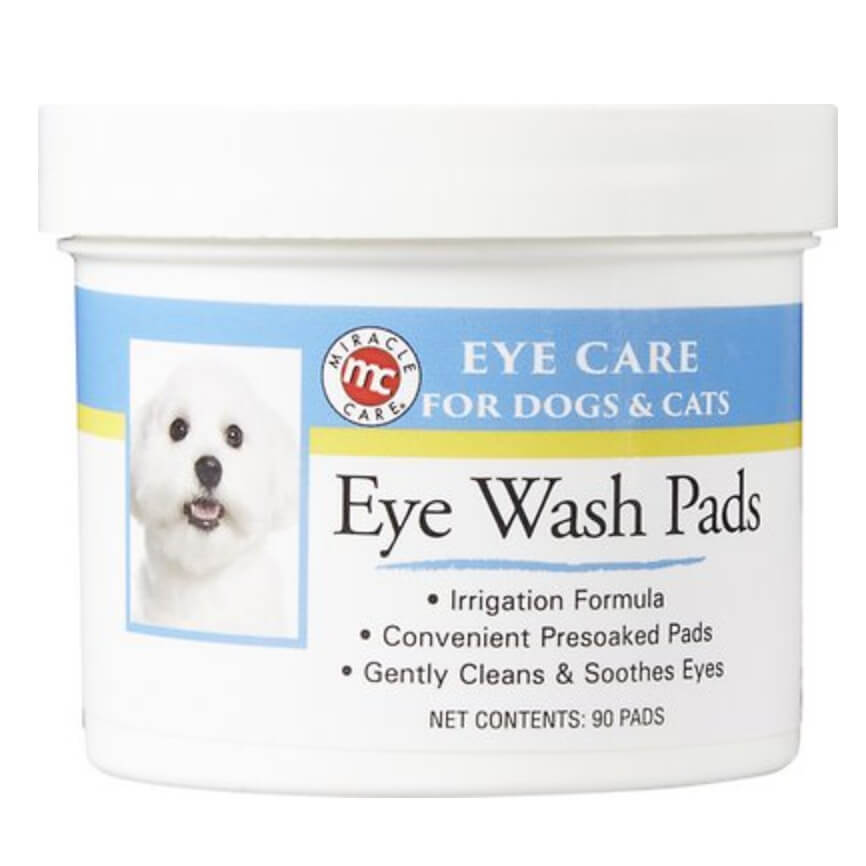
Remedies That Are NOT Recommended
As per Greg Magnusson, chief veterinarian at Leo’s Pet Care:
“I DO NOT RECOMMEND you use…
- OTC Tylosin
- Terramycin (often misspelled ‘Teramyacin’)
- Makeup remover
- Milk of magnesia
- Yogurt
- Hydrogen peroxide
- Bleach
- Gold Bond
- Or corn syrup…
…as obviously putting ANY of these things inside the eye is likely to make your dog really unhappy.”
Magnusson also goes on to say, “I have found no evidence that adding a tiny amount of antacid or vinegar to your dog’s giant tub of stomach acid will have any effect at all on the pH of their tears.”
Making sure to rule out medical causes of excessive tears is the most important thing when it comes to your Doodle’s tear stains. Then under your vet’s clearance, try out some of the suggestions above. Regardless, make sure that you are cleaning his face meticulously and keeping the hair around his eyes trimmed neatly, and hopefully the stains will soon become a thing of the past.
Has your Doodle ever had tear stains? What tear stain remover methods were effective for you? Let us know in the comments below.
Learn How to Stop Shavedowns For Good & Keep Matting At Bay!

Discover the PROPER Doodle coat care routine that gets your pup to cooperate…helps you nip tangles in the bud…and gets groomers to do exactly what you want.
Plus, get $520 worth of Bonus Materials for FREE, including:- Doodle Parenthood Community and Support Group ($190 value)
- Custom Doodle Coat Care Plan Lifetime Access ($75 value)
- Easy to Use Doodle Grooming Tracker ($20 value)
- And MORE!
The information on this page is for informational purposes only. It is not intended to be a substitute for qualified professional veterinary advice, diagnosis, or treatment. Always seek the advice of your veterinarian or other qualified animal health provider with any questions you may have.

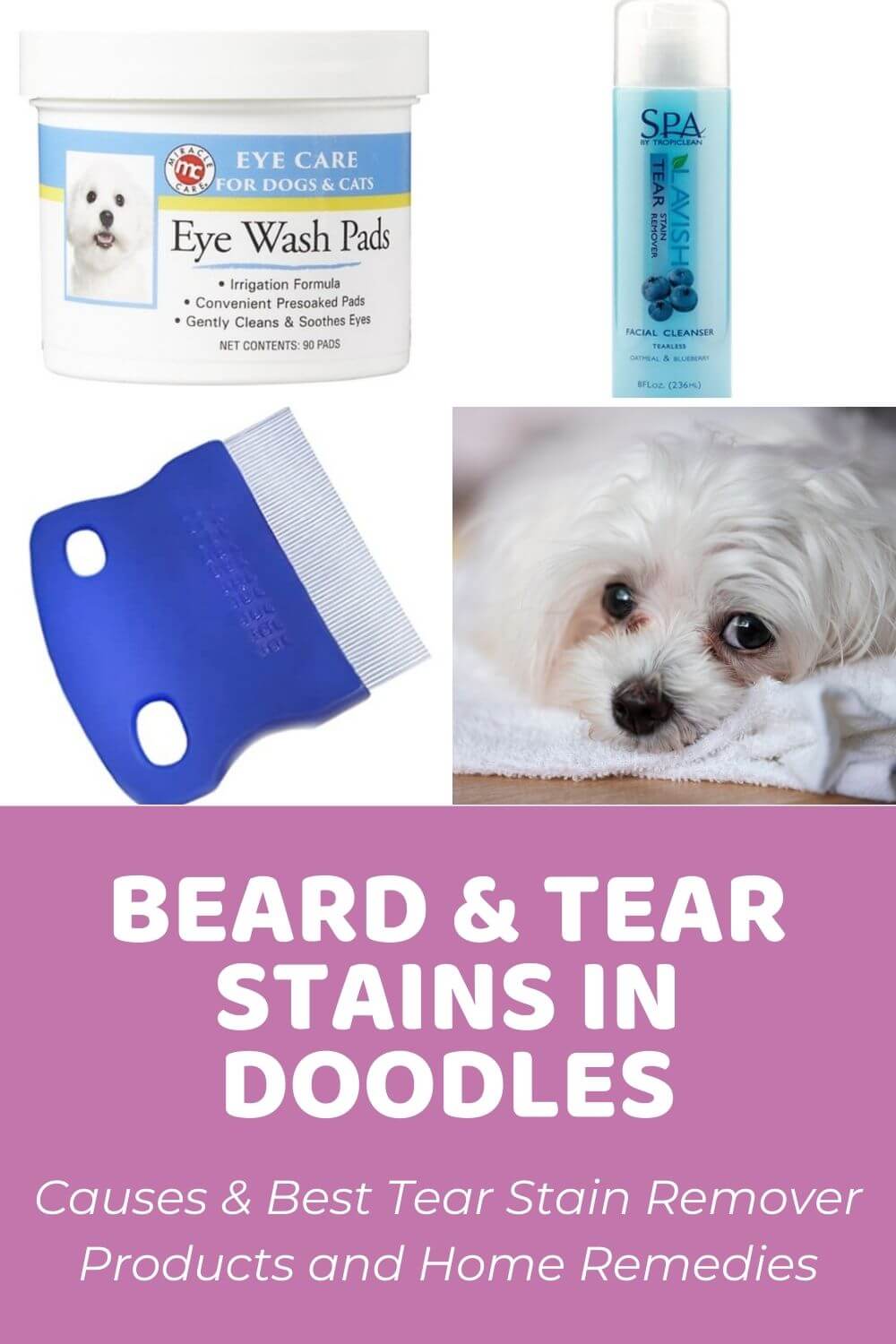
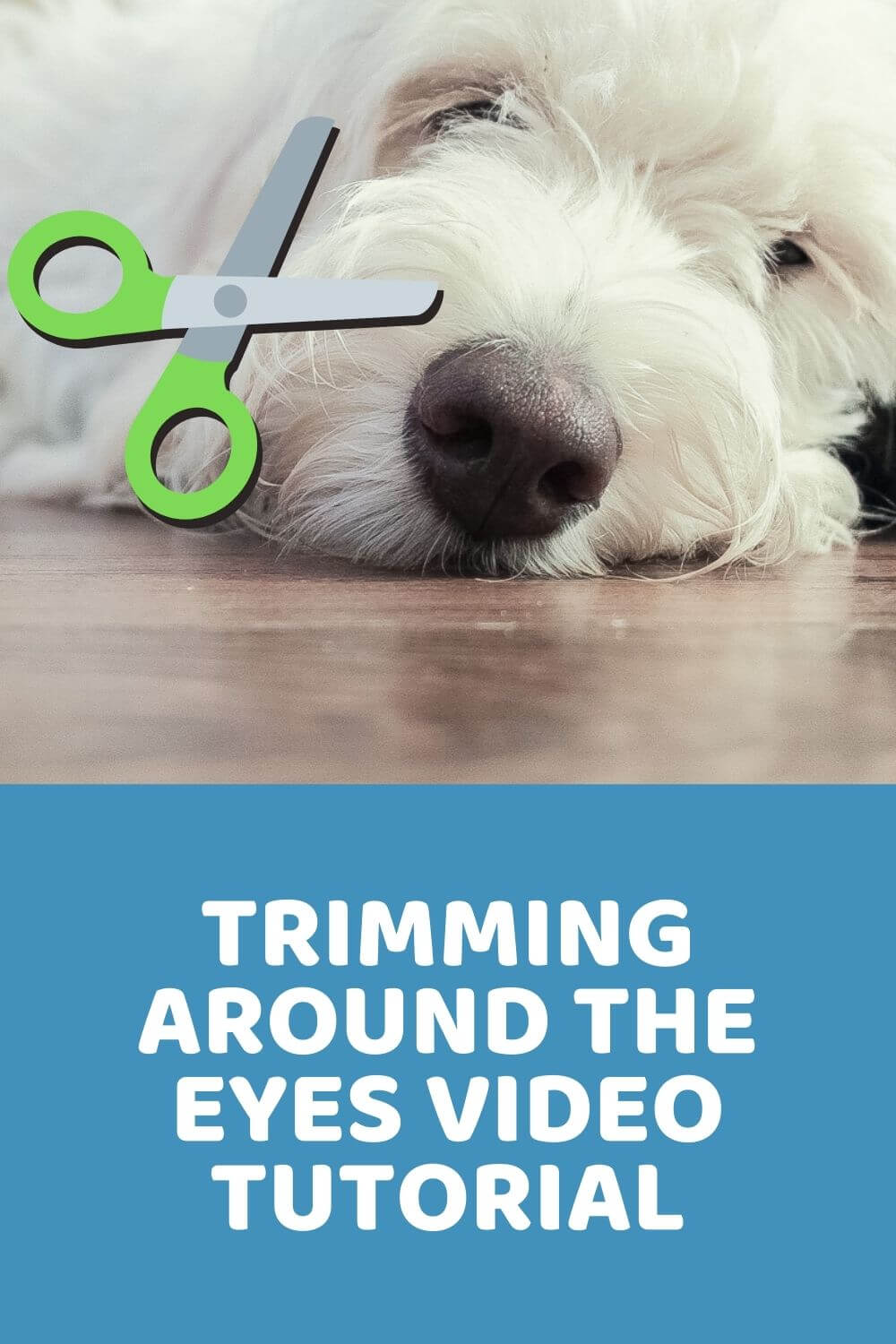
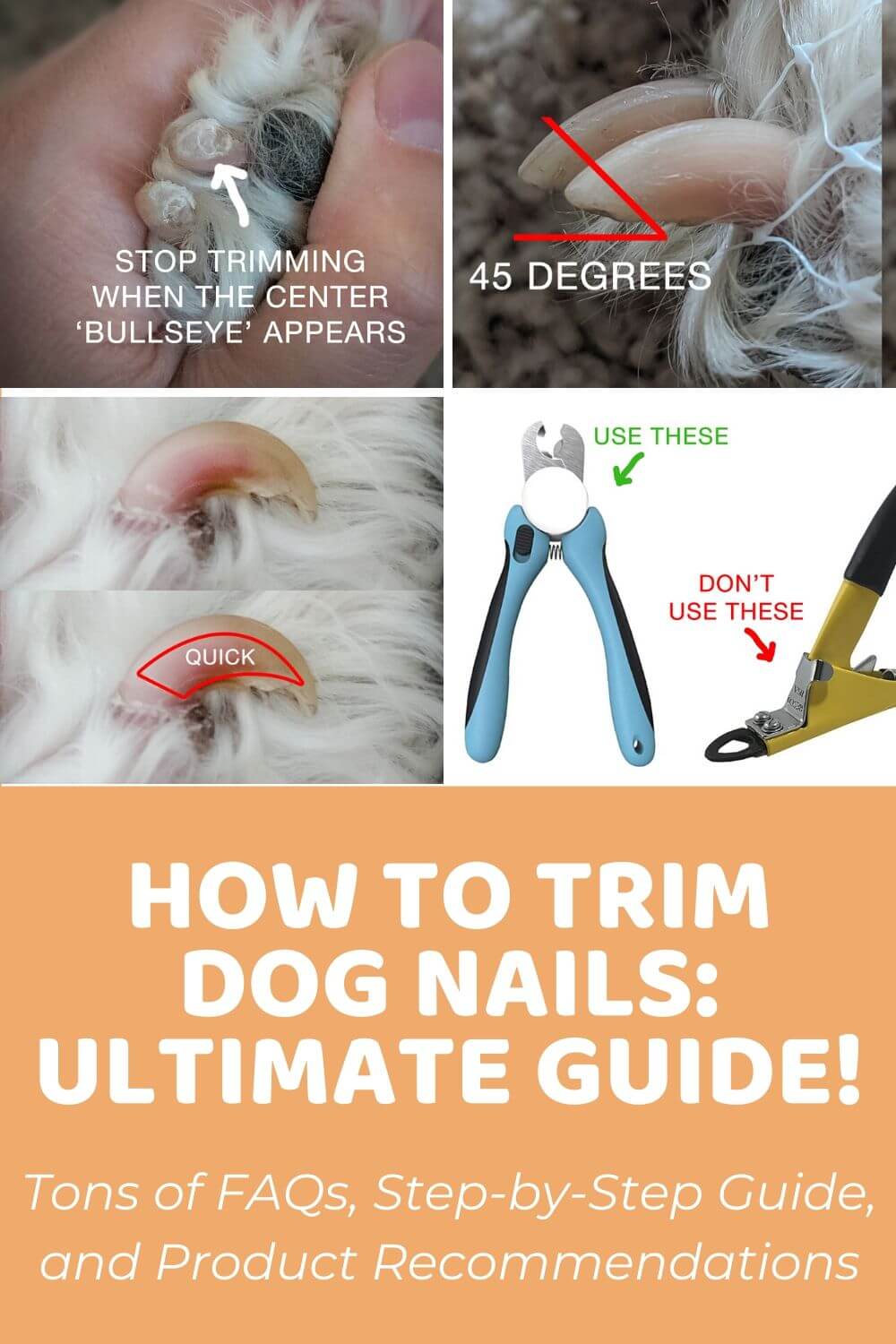
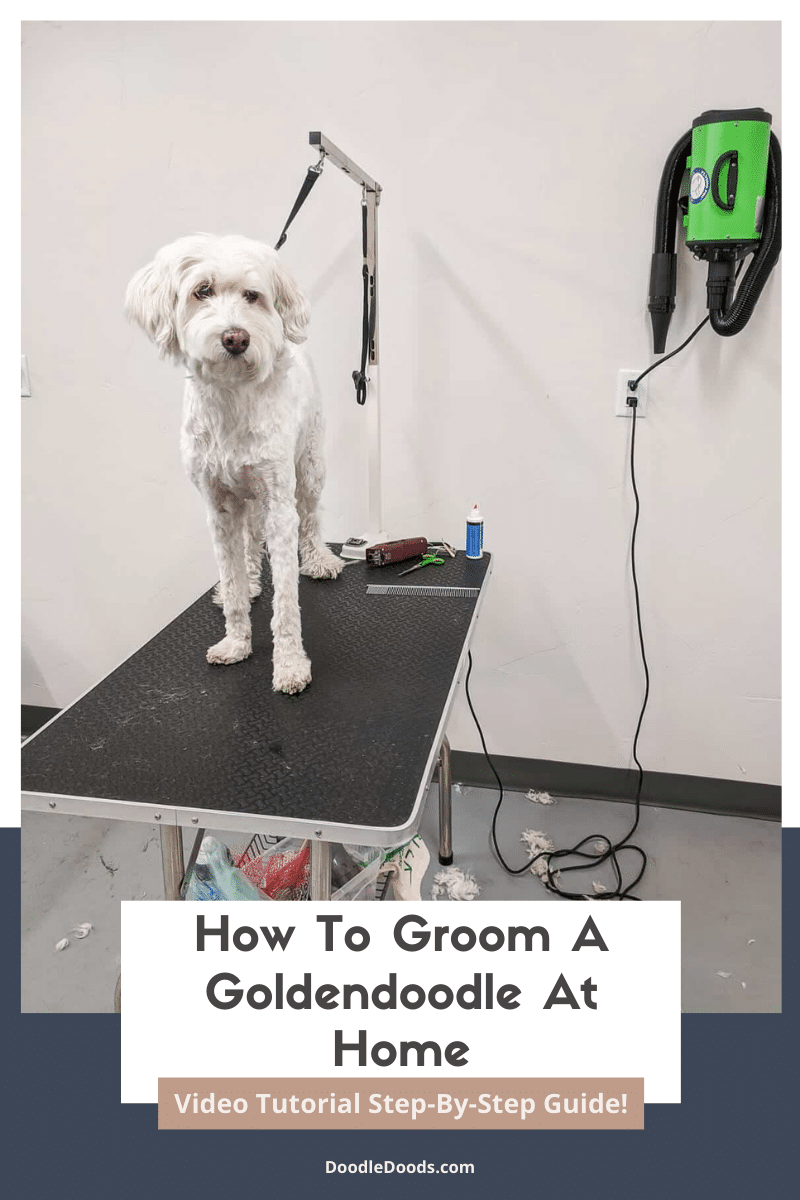
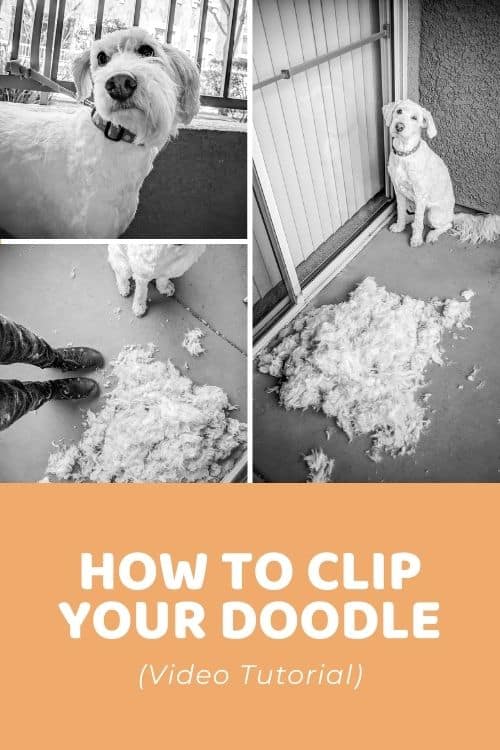
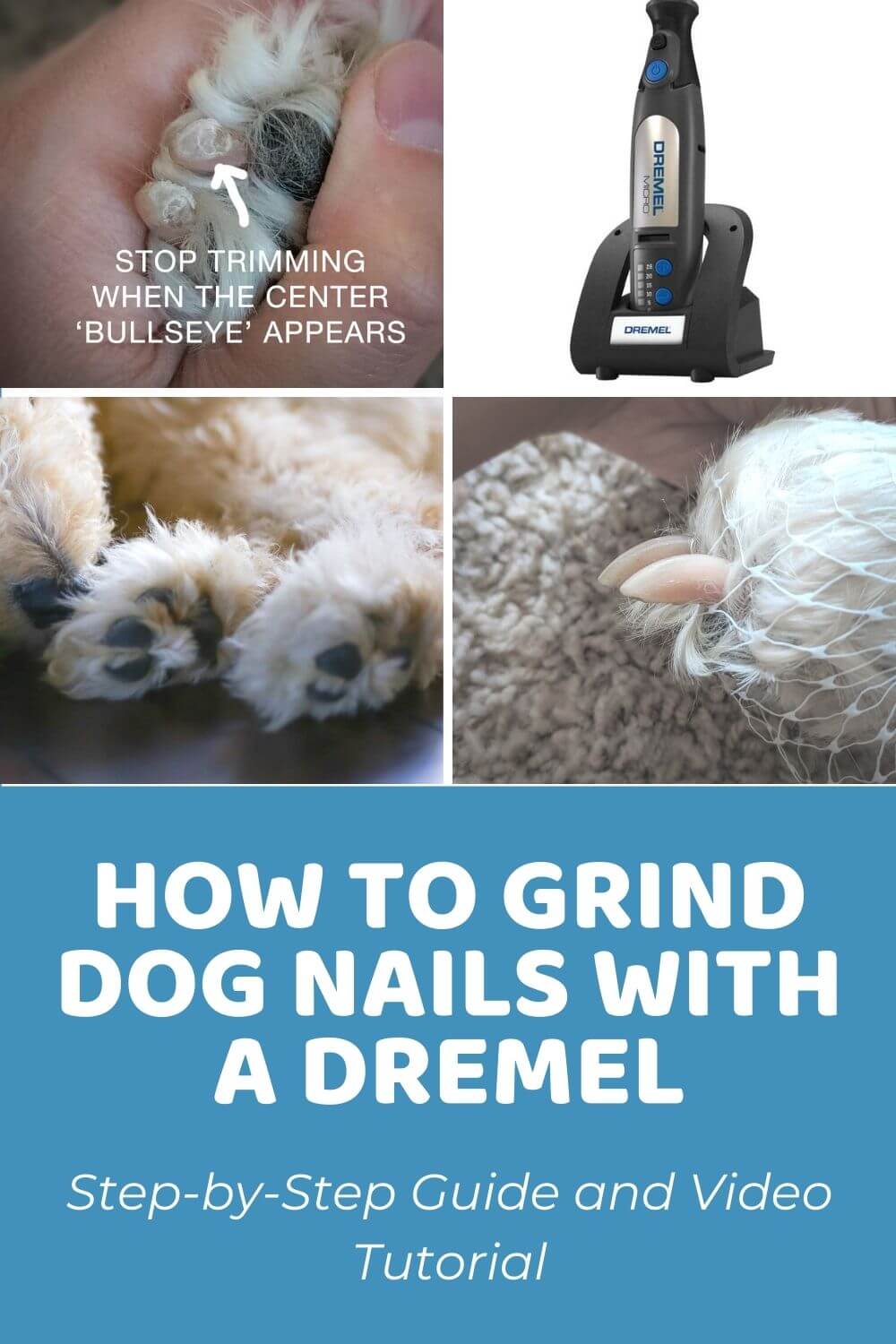
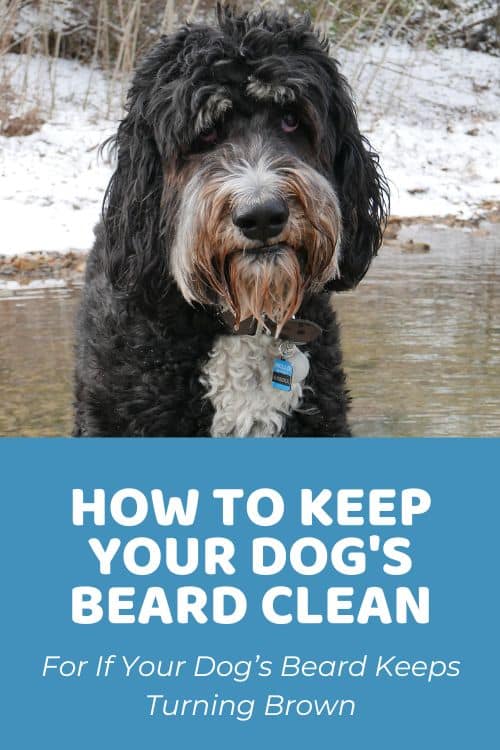
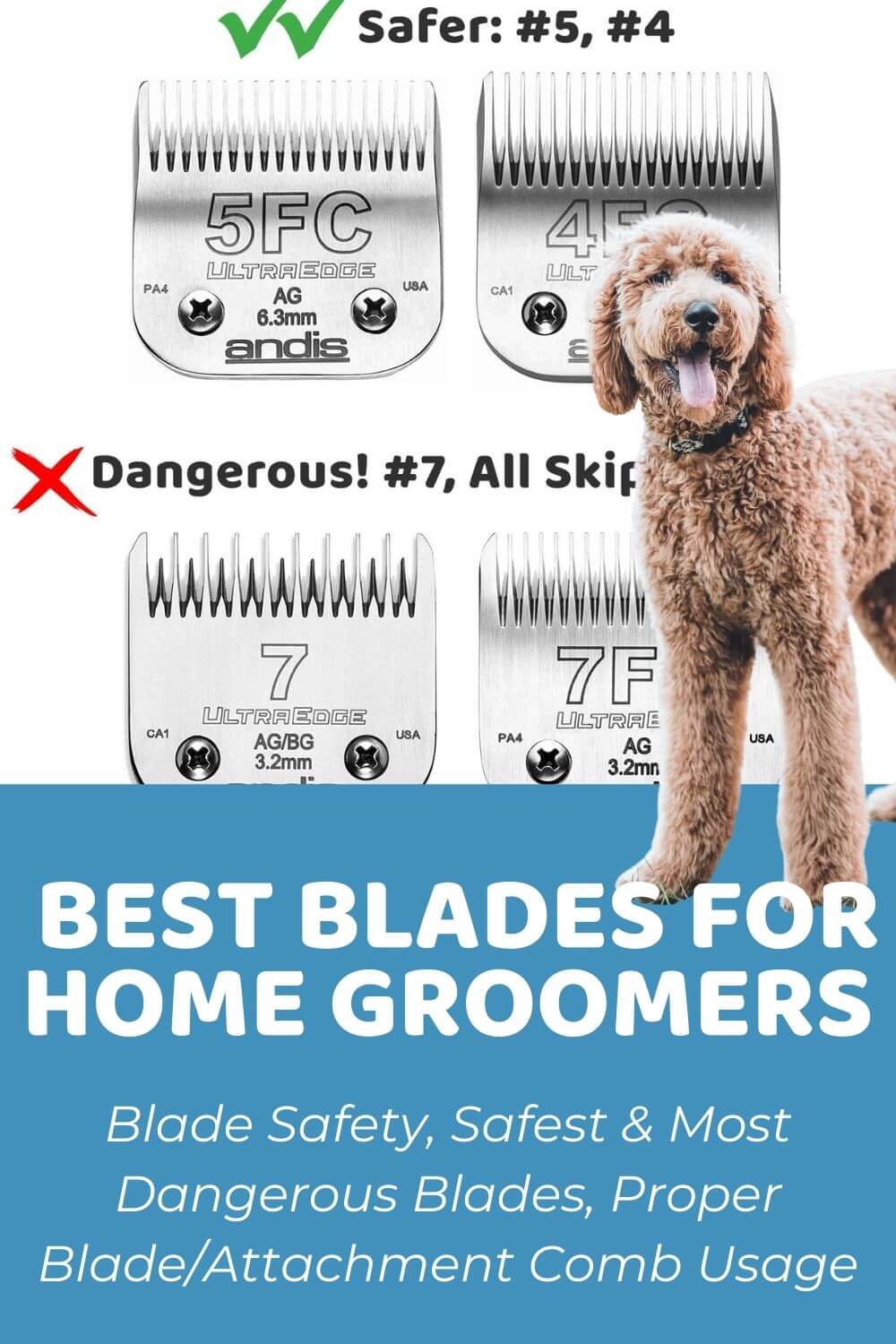
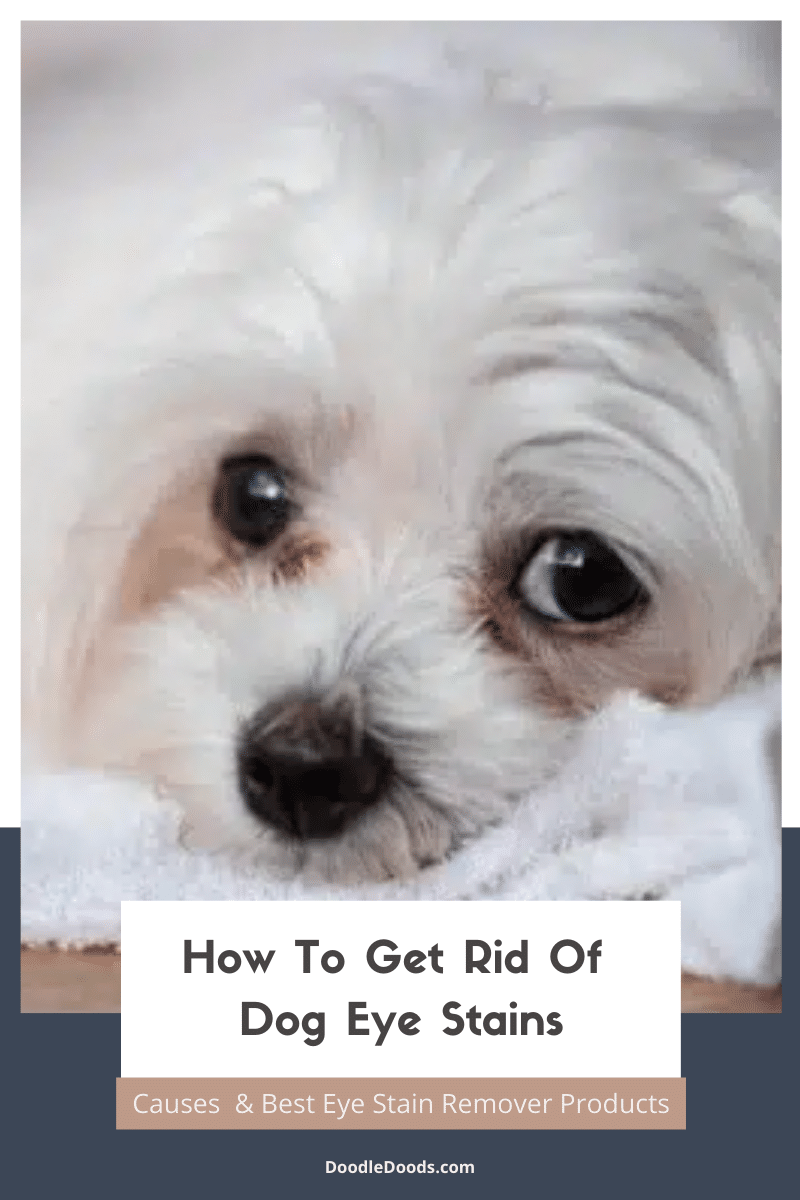
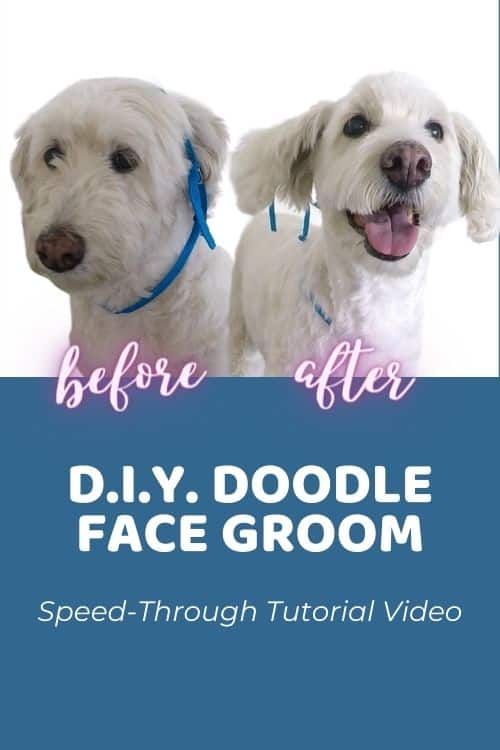
Whitney and Chole, Thanks for the info for staining I’ll hve to get some of the wipes. I was also wondering about the eye buggers (hard crusty’s under both of her eyes I have been wiping her eyes every 2-3 days she still gets them they are ugly and she is touchy if they are touched.
April 20, 2021 at 11:08 am